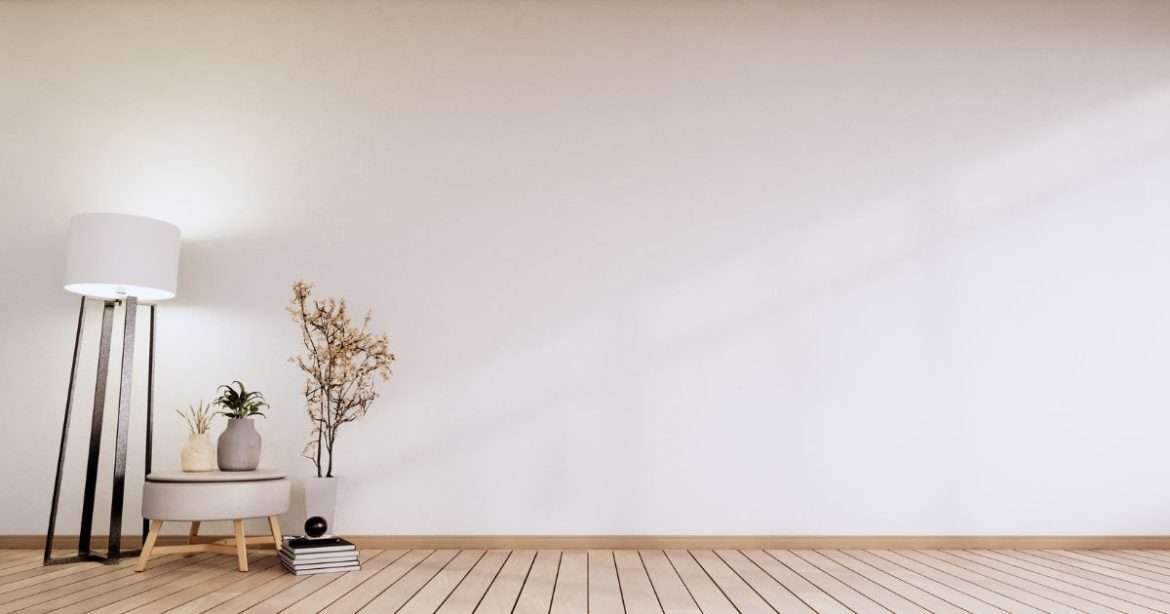Table of Contents
Choosing the perfect wall color to match your wood floor can be daunting, but it’s crucial in achieving harmony and balance within any room. A carefully selected palette can effortlessly elevate the aesthetic appeal of your space and make it stand out from the rest.
However, this can become overwhelming for many homeowners without proper guidance. In this article, we’ll walk you through some tips on how to match wall colors with different types of wood flooring. It will help you create a warm and inviting atmosphere in your home while enhancing its natural beauty.
Understanding The Undertones Of Your Wood Flooring
It’s essential to understand the undertones of your wood flooring when trying to match it with wall colors. The undertones are subtle shades that enhance or clash with a room’s decor.
For instance, some woods have warm undertones like red and orange, while others have cooler tones like blue and gray. Understanding these hues will help you choose complementary paint colors for your walls.
To achieve a balance between the floor and walls, consider two approaches: contrast or coordination. Contrasting involves choosing a color on opposite sides of the color wheel that provides complementing hues through sharp differences, such as white baseboards against dark hardwood floors.
Coordinating incorporates matching harmonious colors in similar tones throughout both elements. For example, a light beige oak floor and cool blue-gray painted walls create a cohesive feel that ties everything together.
Juxtaposing neutral wall paints is equally essential in creating an inviting atmosphere when your wooden floors boast dramatic patterns or dark stains. Understanding how different wood types interact with various hues and textures heightens our chances of achieving optimal satisfaction in our design choices.
Complementary vs. Contrasting Colors
Regarding how to match wall color with wood floor, there are two main approaches: complementary and contrasting colors.
Complementary colors sit opposite each other on the color wheel and create a harmonious balance when used together. For example, if your wood floor has warm undertones of red or orange, pairing it with blue or green walls can create a visually appealing contrast.
On the other hand, contrasting colors refer to those next to each other on the color wheel and can create a bold statement in any room. If you’re looking for an eye-catching effect, consider pairing your warm-toned wood floors with shades of purple or pink for a striking combination.
Ultimately, whether you choose complementary or contrasting hues depends on your preferences and the overall look you want to achieve in your space. With careful consideration and attention, you can easily find the perfect combination. It can enhance your wood floors and wall color while creating a cohesive design scheme throughout your home.
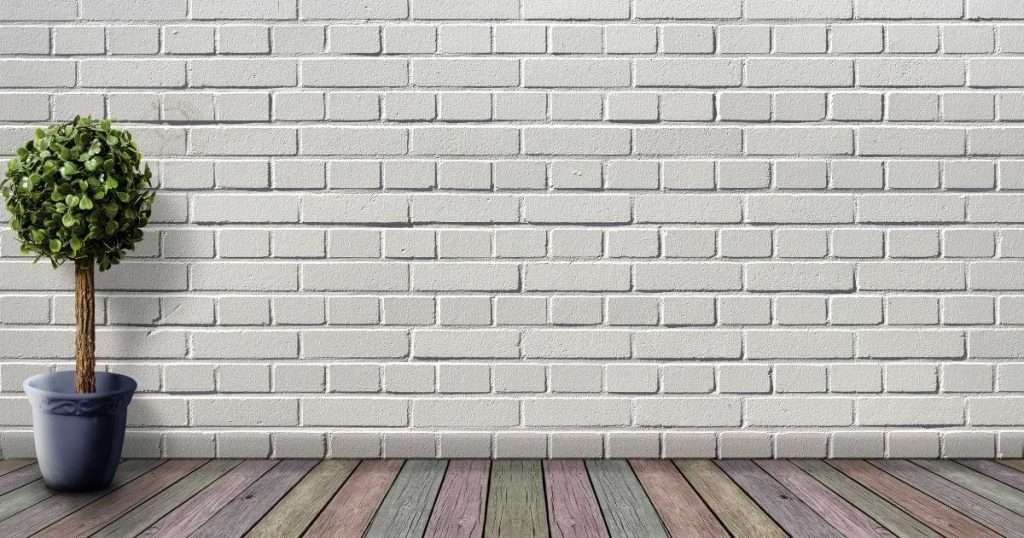
Choosing The Right Shade
Choosing the right shade of wall color is a critical element in interior design as it can create a harmonious atmosphere and complement other components in your space. A light-colored wall can make your room look brighter, more prominent, and open, while dark tones create an intimate ambiance that brings warmth to smaller spaces.
However, you must consider natural or artificial light factors before deciding on a particular color. The relationship between wood flooring and wall colors depends on several elements, such as the type of wood finish and the undertones in its hues.
Lighter wood floors pair well with soft pastels or creamy whites, adding brightness to space without making it feel stark. On the other hand, darker woods often suit richer shades like burnt orange or navy blue that create contrast while highlighting their textures beautifully.
Ultimately choosing the perfect tone for walls comes down to personal preference, but always keep in mind how it pairs with existing furniture pieces for cohesion within your home’s design.
Playing With Neutrals
Playing with neutrals is one of the best strategies to create a timeless look that compliments any wood floor. Neutral colors like beige, gray, and white are versatile and can work well in modern and traditional settings. The key to using neutral wall paint is to select shades that complement the wood grains of your flooring while providing contrast against it. For instance, if you have light-colored oak floors, choose greige or warm gray walls, which will balance out the natural yellowish tones of the oak.
To add depth and interest to your room design when working with neutrals, consider adding texture through fabrics such as pillows, curtains, or throws made from natural fibers. A mix of textures will provide visual appeal and improve acoustics in your space due to the sound absorption qualities of textiles.
Another way is by introducing a pop or two accent color(s), like a deep navy blue throw pillows on a beige sofa. It creates visual interest without disrupting the overall cohesive tone-on-tone neutrality scheme.
Matching wall color with wood floor can be intimidating for homeowners unsure what combinations would work best together. Since every wood species has unique characteristics affecting how different pigments interact with them visually.
Therefore, following these tips on matching wall color with the wood floor should help homeowners create a harmonious atmosphere.
Tips For Bold Statement Walls
When adding a pop of color to your space, bold statement walls can be the perfect solution. Not only do they add interest and drama to any room, but they can also create a visually appealing focal point.
To make the most out of your statement wall, choose colors that complement the existing tones in your space. For example, if you have neutral furniture or fixtures, opt for a bright, vibrant shade like cobalt blue or coral.
Another way to enhance your statement wall is by incorporating texture. Wallpaper with raised patterns or faux-wood paneling is just two examples of ways to add depth and dimension while simultaneously impacting visitors. A carefully curated gallery display featuring frames of varying thicknesses and shapes can also act as an artistic accent wall without spending much time or money.
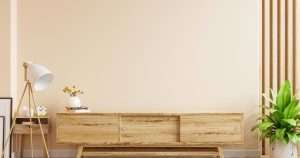
Working With Patterns
Working with patterns can be a fun and creative way to give your home a unique personality. However, mixing and matching wood and wallpaper requires careful consideration to avoid overwhelming the space or creating an unpleasant clash of styles.
When selecting wood flooring and wallpaper, consider their colors, textures, and patterns. If you have wooden floors with solid grain patterns or vivid color variations, opt for neutral-colored wallpapers. They will not compete for visual attention but instead, complement the natural beauty of the hardwood.
Another helpful tip is choosing complementary color schemes between your desired wood finish and wall coverings. For example, warm-toned woods such as oak or cherry pair beautifully with earthy shades like beige or soft green. Cooler-toned woods like maple look great against pastels like light blue or warm grays with lilac undertones.
By carefully combining these elements, you can create a harmonious balance between the boldness of hardwoods and the subtleties of wallpaper design. It is used to produce a visually stunning living environment.
Accent Colors And Decorative Details
Once you have found the perfect wall color to complement your wood flooring, it’s time for the final touches that add depth and interest to your space. Adding accent colors throughout a room is an excellent way to create a cohesive design scheme.
Consider incorporating accent colors through decorative details such as throw pillows, curtains, or artwork. Selecting pieces that reflect hues present in both the wall color and flooring can help unify your space while adding visual interest.
Decorative details go beyond just adding pops of color; they can also enhance the overall aesthetic appeal of your home. Wood floors lend themselves well to design elements like natural textures and rustic finishes.
Achieve a seamless look by choosing items that mimic or enhance those features already present within your wood floor selection. Adding texture with throws or rugs is an easy way to create warmth within your living spaces, especially in colder months when additional coziness gets desired.
With these final touches, you can enjoy the harmony between wall color and wood floor while ensuring each element complements the other perfectly.
Innovative Ideas:
Experiment with bold contrasts by opting for unexpected undertones to complement your wood floor.
For example, pair warm-toned floors with cool-toned walls to create a striking visual contrast that adds depth and character to your space.
Choose the Opposite Undertones for your Walls:
Select wall colors with undertones contrasting your wood floor for a dynamic look.
If your floor has warm undertones, opt for cool-toned walls to create a balanced and visually stimulating environment that highlights the beauty of both elements.
Bedroom Floor and Wall Color Combinations:
Pair soft, neutral wall colors with warm-toned wood flooring to create a tranquil atmosphere in your bedroom.
Shades like creamy whites, soft greys, or pale blues can complement the warmth of the wood, fostering a cozy and inviting ambiance perfect for rest.
Best Paint Colors for Gray Wood Flooring:
Accentuate the modern elegance of gray wood flooring by choosing wall colors that enhance its cool undertones.
Consider soft pastels like blush pink or light sage green to add warmth and depth to the space while maintaining a contemporary aesthetic that feels fresh and inviting.
Best wall color combinations for white tile floors:
Consider light and airy wall colors for white tile floors to complement the brightness.
Soft pastel shades like pale blue, mint green, or blush pink can enhance the crispness of white tiles.
Alternatively, opt for neutral tones such as dove gray or beige for a subtle and elegant look.
Best Wall Color for Gray Floors:
Gray floors offer versatility in wall color choices.
Pair them with soft whites or creams for a clean and modern aesthetic, or use contrasting hues like navy blue or charcoal gray for a bold statement.
Lighter shades of gray on the walls can create a harmonious and cohesive atmosphere.
Best wall colors for oak floors:
Oak floors’ warm undertones pair beautifully with earthy and natural wall colors.
To complement the richness of oak, consider soft greens, warm taupes, or creamy yellows.
For a more contemporary vibe, light grays or muted blues can create a subtle contrast while maintaining a cozy feel.
What Paint Color Goes With Golden Oak Trim?
Choose wall colors that enhance its warmth to complement the golden oak trim while providing contrast.
Soft, earthy tones like warm taupe or creamy beige can create a cozy backdrop and highlight the oak trim’s richness.
Alternatively, muted greens or blues with warm undertones can offer a complementary contrast, bringing out the wood’s natural beauty while adding depth to the space.
Avoid overly cool or stark colors that may clash with the warmth of the oak trim.
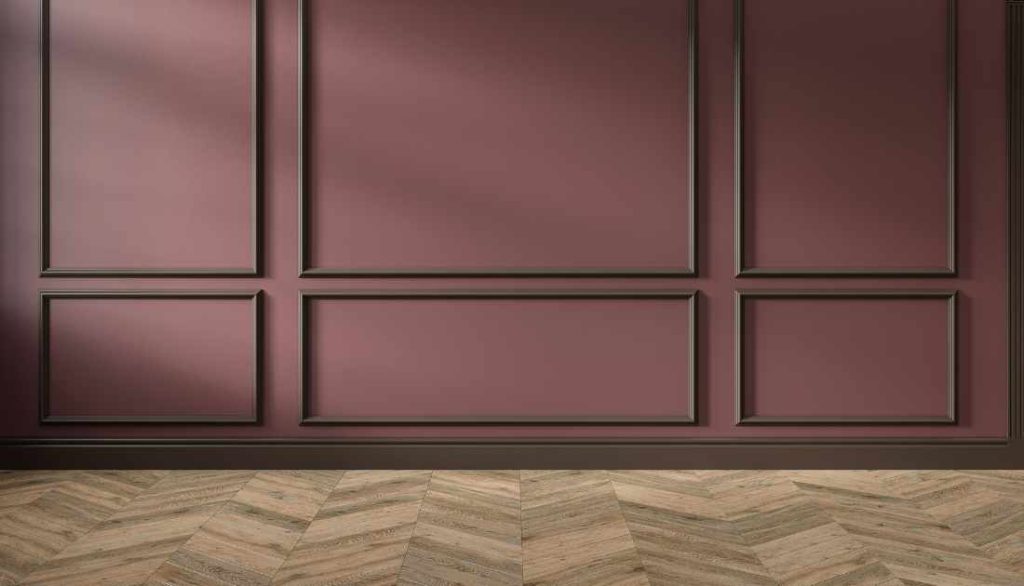
how to match wall color with wood floor
Cherry Hardwood Floor Wall Colors:
Cherry hardwood floors exude warmth and sophistication, making them perfect for various wall color options.
Embrace cherry’s richness with warm neutrals like caramel or honey tones.
Alternatively, balance the deep hue with soft greens or blues for a refreshing and inviting ambiance.
Living room wall color and floor combinations:
In the living room, the choice of wall color and floor combination sets the tone for the space.
Consider light oak floors with soft beige or pale gray walls for a timeless and elegant look.
For a more dramatic effect, pair dark hardwood floors with crisp white walls to create a striking contrast.
What Wall color combinations For wooden floors:
When choosing wall colors to complement wooden floors, consider the tone and undertones of the wood.
- For cherry hardwood floors, warm neutrals like beige or taupe can enhance the richness of the wood.
- Dark hardwood floors create contrast with light, airy hues such as soft gray or creamy whites.
- Golden wood floors pop against earthy tones like olive green or terracotta.
- Gray hardwood floors harmonize with cool-toned colors like slate blue or charcoal.
- Light hardwood floors shine with pastel shades like pale blue or soft peach.
What Wall Colors For Cherry Hardwood Floors:
Cherry hardwood floors exude warmth and sophistication.
Opt for wall colors that enhance cherry wood’s natural beauty to complement its rich tones. Warm neutrals like caramel or honey can bring out the warmth in cherry wood while providing a cozy atmosphere.
Alternatively, deep shades like burgundy or navy can create a striking contrast, adding depth to the space. Soft shades of sage green or dusty rose can complement cherry hardwood floors, offering a subtle, elegant look.
What Wall Colors For Dark Hardwood Floors:
Dark hardwood floors make a bold statement and create a sense of depth in a room. When selecting wall colors, aim for contrast to prevent the space from feeling too heavy.
Light, airy hues like soft gray or creamy white can balance the darkness of the floors, creating a contemporary and sophisticated vibe.
Earthy tones such as olive green or warm taupe can also complement dark hardwood floors, adding warmth and dimension to the space.
What Wall Colors For Golden Wood Floors:
Golden wood floors infuse a room with warmth and radiance. Choose wall colors that harmonize with golden undertones to enhance their natural glow.
Soft, earthy hues like sandy beige or muted terracotta can complement the warmth of golden wood floors while maintaining a cozy ambiance.
Light, airy colors such as pale yellow or soft peach can also accentuate the brightness of the floors, creating a cheerful and inviting atmosphere.
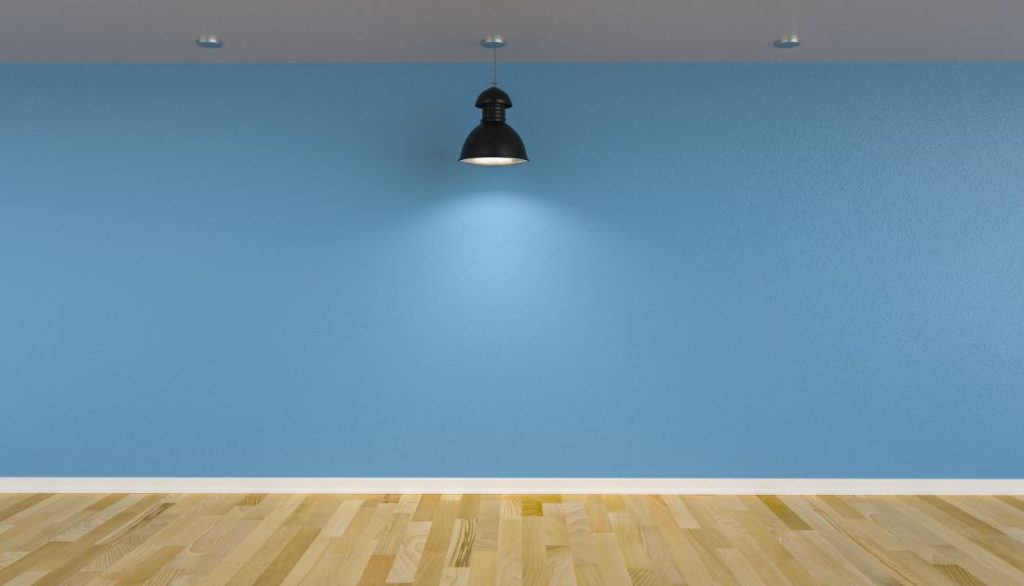
how to match wall color with wood floor
Wall Colors For Medium Wood Floors:
Medium wood floors balance light and dark, offering versatility in choosing complementary wall colors.
To enhance the warmth and richness of the medium-toned wood, opt for warm, neutral tones like soft taupes, warm grays, or creamy whites.
These colors create a timeless and inviting ambiance, providing a cohesive backdrop that highlights the flooring’s natural beauty.
What Color Floor Goes With Grey Walls:
When pairing gray walls with flooring, consider options that create contrast or complement the cool tones of the walls. Opt for light oak or maple hardwood floors to add warmth and contrast against the coolness of the gray walls.
Alternatively, dark walnut or espresso-colored floors can create a dramatic and sophisticated look that complements the modern aesthetic of gray walls, enhancing the overall depth and dimension of the space.
What Floor Color Matches the Orange Walls:
Consider a warm-toned floor, like honey or caramel-colored wood, complementing orange walls. These tones create a harmonious balance with the warmth of the orange walls, enhancing the cozy ambiance.
Alternatively, a neutral-colored floor, such as light beige or soft cream, can subtly contrast while maintaining a cohesive look. Avoid cooler tones like gray, as they may clash with the warmth of the orange.
What Floor Colors Go With Light Blue Walls:
For light blue walls, opt for flooring that complements the serene vibe.
Light or medium-toned wood floors in shades like oak or maple can create a soothing atmosphere that enhances the softness of the blue walls.
Additionally, cool-toned flooring options such as light gray or pale taupe can offer a contemporary feel, balancing the freshness of the blue walls without overwhelming the space.
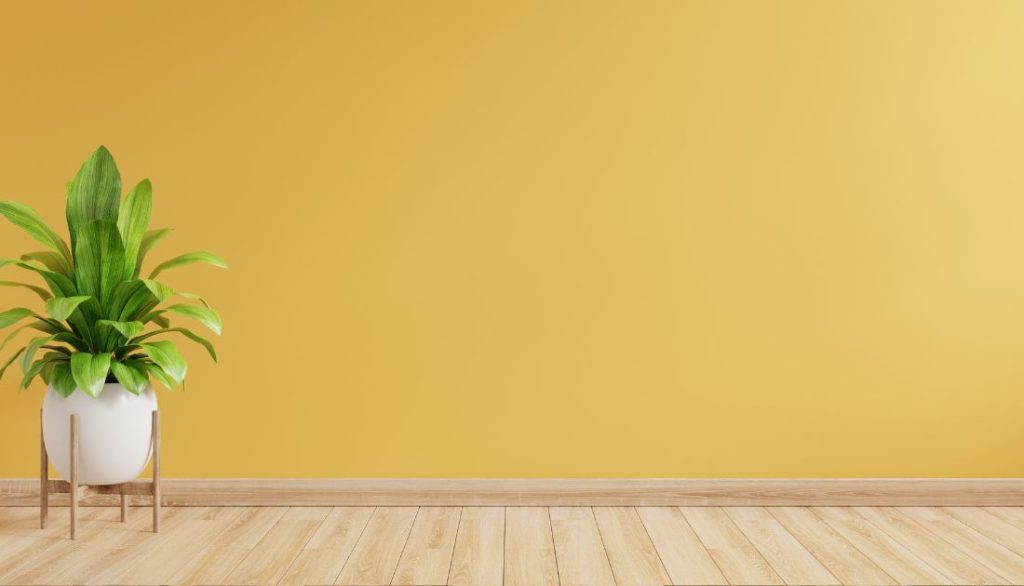
how to match wall color with wood floor
FAQs
What color floor hides dog hair?
When choosing a floor color to minimize the appearance of dog hair, opt for medium to dark tones such as walnut, mahogany, or dark oak. These shades tend to camouflage pet hair better than lighter ones, helping to keep your floors looking cleaner between cleanings.
Which shows scratches more, dark or light hardwood?
Dark hardwood floors tend to show scratches more prominently than light hardwood floors. Light-colored floors, such as maple or ash, can hide scratches better due to their lighter tones, making them a better choice for high-traffic areas or homes with pets.
What color should stair spindles be?
Stair spindles are often painted white to create a classic and timeless look. White spindles contrast beautifully with wood-colored handrails and treads, creating a visually appealing staircase.
However, you can also match the color of the spindles to the floor or other wood elements in your home for a cohesive design scheme.
How can I tell the undertones of my hardwood floors?
To determine the undertones of your hardwood floors, examine them under both natural and artificial light. Look for hints of red, yellow, orange, or brown in the wood grain.
Additionally, compare your floors to samples of known undertones to help identify the predominant tones present in your hardwood.
Should floors be darker or lighter than walls?
Floors are often darker than walls to create contrast and balance. However, this is a flexible rule. Light-colored floors can make a space feel larger and more open, while darker floors add warmth and coziness.
Ultimately, the decision depends on your preference and the overall aesthetic you want to achieve in your home.
Conclusion
Matching wall color with wood floors is an essential aspect of interior design that can significantly impact the overall aesthetic appeal of a room. By understanding the undertones of your wood flooring, you can choose complementary or contrasting colors to achieve a harmonious balance. Consider factors such as natural lighting and the type of wood finish to guide your selection of the right shade for the walls.
Neutrals are a versatile option that can work well with any wood floor, while bold statement walls and patterns can add interest and personality to your space. Incorporating accent colors and decorative details further enhances the cohesion between the wall color and the wood floor, creating a visually stunning living environment. By following these tips, homeowners can create a warm and inviting atmosphere while embracing the natural beauty of wood flooring.
